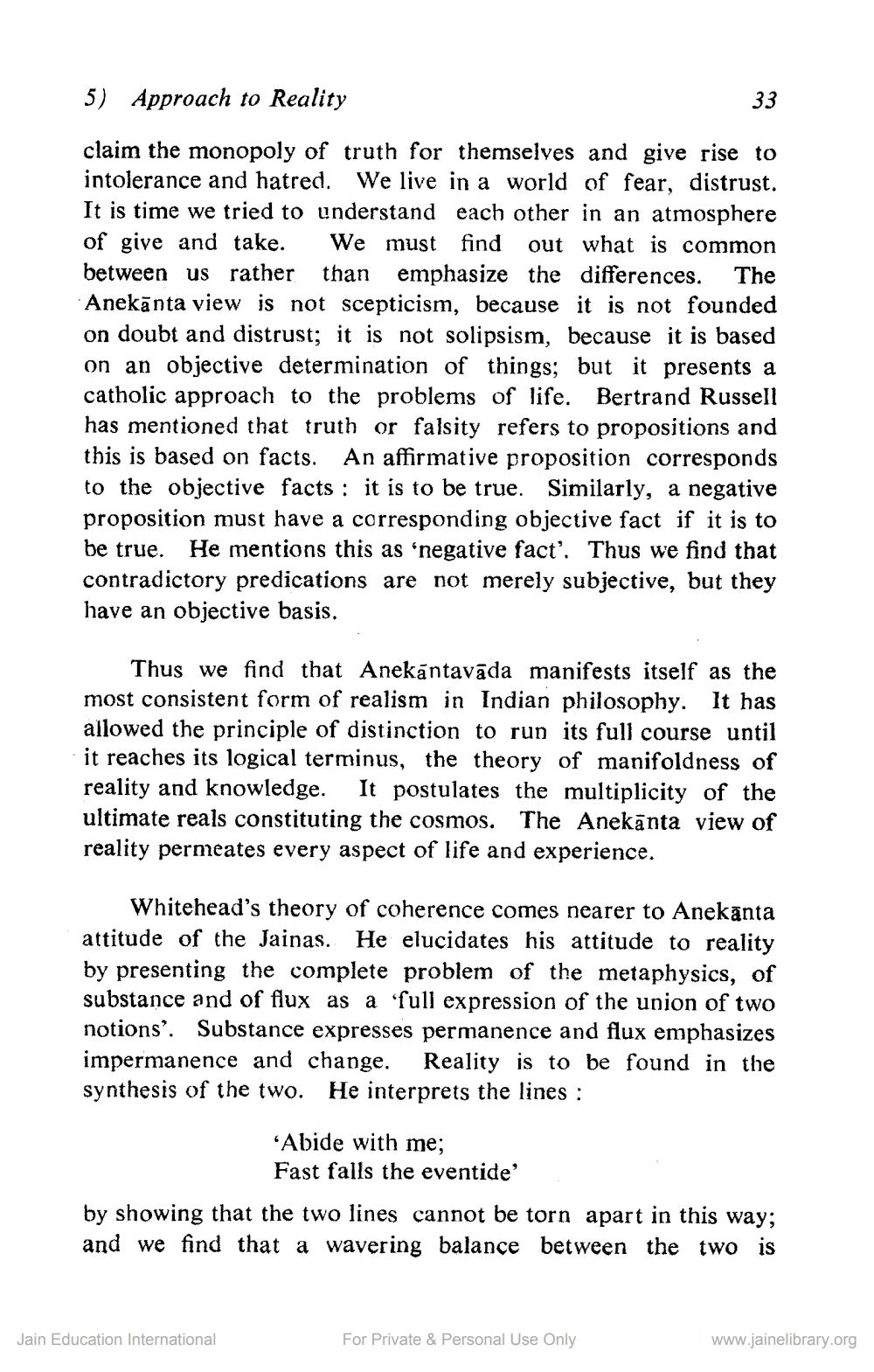________________
5) Approach to Reality
33
claim the monopoly of truth for themselves and give rise to intolerance and hatred. We live in a world of fear, distrust. It is time we tried to understand each other in an atmosphere of give and take. We must find out what is common between us rather than emphasize the differences. The Anekānta view is not scepticism, because it is not founded on doubt and distrust; it is not solipsism, because it is based on an objective determination of things; but it presents a catholic approach to the problems of life. Bertrand Russell has mentioned that truth or falsity refers to propositions and this is based on facts. An affirmative proposition corresponds to the objective facts: it is to be true. Similarly, a negative proposition must have a corresponding objective fact if it is to be true. He mentions this as 'negative fact'. Thus we find that contradictory predications are not merely subjective, but they have an objective basis.
Thus we find that Anekantavāda manifests itself as the most consistent form of realism in Indian philosophy. It has allowed the principle of distinction to run its full course until it reaches its logical terminus, the theory of manifoldness of reality and knowledge. It postulates the multiplicity of the ultimate reals constituting the cosmos. The Anekanta view of reality permeates every aspect of life and experience.
Whitehead's theory of coherence comes nearer to Anekanta attitude of the Jainas. He elucidates his attitude to reality by presenting the complete problem of the metaphysics, of substance and of flux as a full expression of the union of two notions'. Substance expresses permanence and flux emphasizes impermanence and change. Reality is to be found in the synthesis of the two. He interprets the lines:
'Abide with me;
Fast falls the eventide'
by showing that the two lines cannot be torn apart in this way; and we find that a wavering balance between the two is
Jain Education International
For Private & Personal Use Only
www.jainelibrary.org




